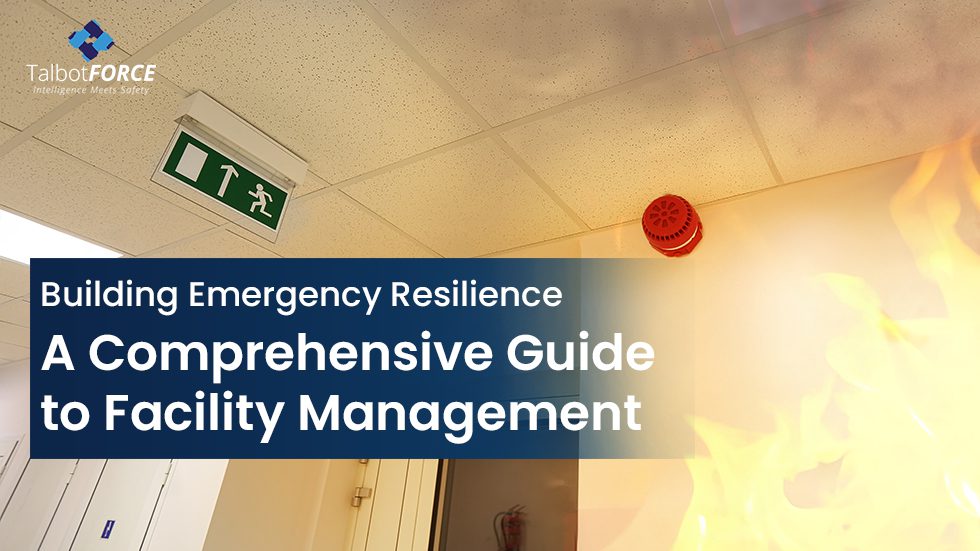Building Emergency Resilience: A Comprehensive Guide to Facility Management
Facility managers are essential in maintaining the security and welfare of building occupants in a constantly shifting environment, particularly in times of emergency. Strong emergency response plans suited for campus business buildings are essential as we confront the unpredictable nature of emergencies. Here are some ways that proactive facilities management techniques can strengthen an emergency response strategy and create a resilient atmosphere that supports business continuity.
Facility managers need to carefully evaluate any risks that are unique to the kind of building and its location, working with important stakeholders. This can include examining the strength of vital infrastructure, such as electrical systems, or assessing vulnerabilities to natural disasters and fire safety precautions.
The Core of Emergency Response: Facility Management Strategies
1. Communication is Key
In times of crisis, communication is the linchpin that holds everything together. Clear communication channels are essential for disseminating critical information to building occupants, emergency responders, and relevant stakeholders. Facility management needs to utilize a multi-channel approach encompassing text alerts, internal communication platforms, social media updates, and designated emergency radio frequencies to keep everyone informed. Providing timely and accurate instructions on evacuation routes, shelter-in-place procedures, and safety measures is vital for minimizing panic and ensuring occupant safety.
2. Training and Drills
Emergency response is only as effective as the preparedness of the individuals involved. Conducting regular training sessions and drills helps familiarize occupants with evacuation procedures, emergency exits, and safety protocols. Simulating crisis scenarios allows for a more coordinated and efficient response when a real emergency arises.
3. Resource Allocation and Contingency Planning
Facility managers must develop comprehensive contingency plans that outline the allocation of resources during emergencies. This includes identifying emergency shelters, medical facilities, and securing essential supplies. Establishing partnerships with local emergency services and community organizations can enhance resource-sharing capabilities and strengthen the overall emergency response network.
4. Technological Integration
In the digital age, leveraging technology is paramount for effective emergency response. Facility managers should explore the integration of smart building technologies, such as sensors and automated systems, to enhance situational awareness. These technologies can provide real-time data, aiding in quick decision-making and response coordination.
5. Thinking Ahead and Addressing the Unexpected
Emergencies rarely follow a script. Facility managers need to be adaptable. Critical thinking skills and the ability to assess the situation in real time are essential for adjusting the plan as needed. Resourcefulness and a calm demeanour are invaluable assets during these times.
The Emergency Response Checklist: A Lifesaving Tool
An emergency response checklist serves as the compass guiding facility managers through the turbulent waters of crisis management.
1. Preparedness Protocols
The checklist should outline step-by-step protocols for preparing the building and its occupants for potential emergencies. This includes regular inspections, equipment maintenance, and the dissemination of emergency preparedness information to all stakeholders.
2. Communication Plan
A detailed communication plan should be an integral part of the checklist, highlighting emergency notification systems, contact lists, and procedures for disseminating information internally and externally.
3. Evacuation Procedures
Clear and concise evacuation procedures must be outlined in the checklist, detailing primary and secondary evacuation routes, assembly points, and methods for assisting individuals with disabilities.
4. Resource Inventory
Facility managers should maintain an up-to-date inventory of emergency resources, including medical supplies, emergency kits, and communication devices. Regular audits and restocking efforts ensure that these resources remain readily available when needed.
5. Training and Drills Schedule
The checklist should include a schedule for regular training sessions and emergency drills, ensuring that building occupants are well-prepared for a variety of crisis scenarios.
A Resilient Future
In the face of uncertainty, effective emergency response strategies and a comprehensive emergency response checklist empower facility managers to navigate crises confidently. By prioritizing proactive planning, communication, and the integration of technology, commercial buildings on campus can become resilient bastions of safety.
As facility managers continue to evolve in their roles, the emphasis on preparedness and collaboration will be key to managing campus facilities during emergencies. By implementing these strategies and adhering to the checklists, we can build a safer and more resilient future for our occupants.
